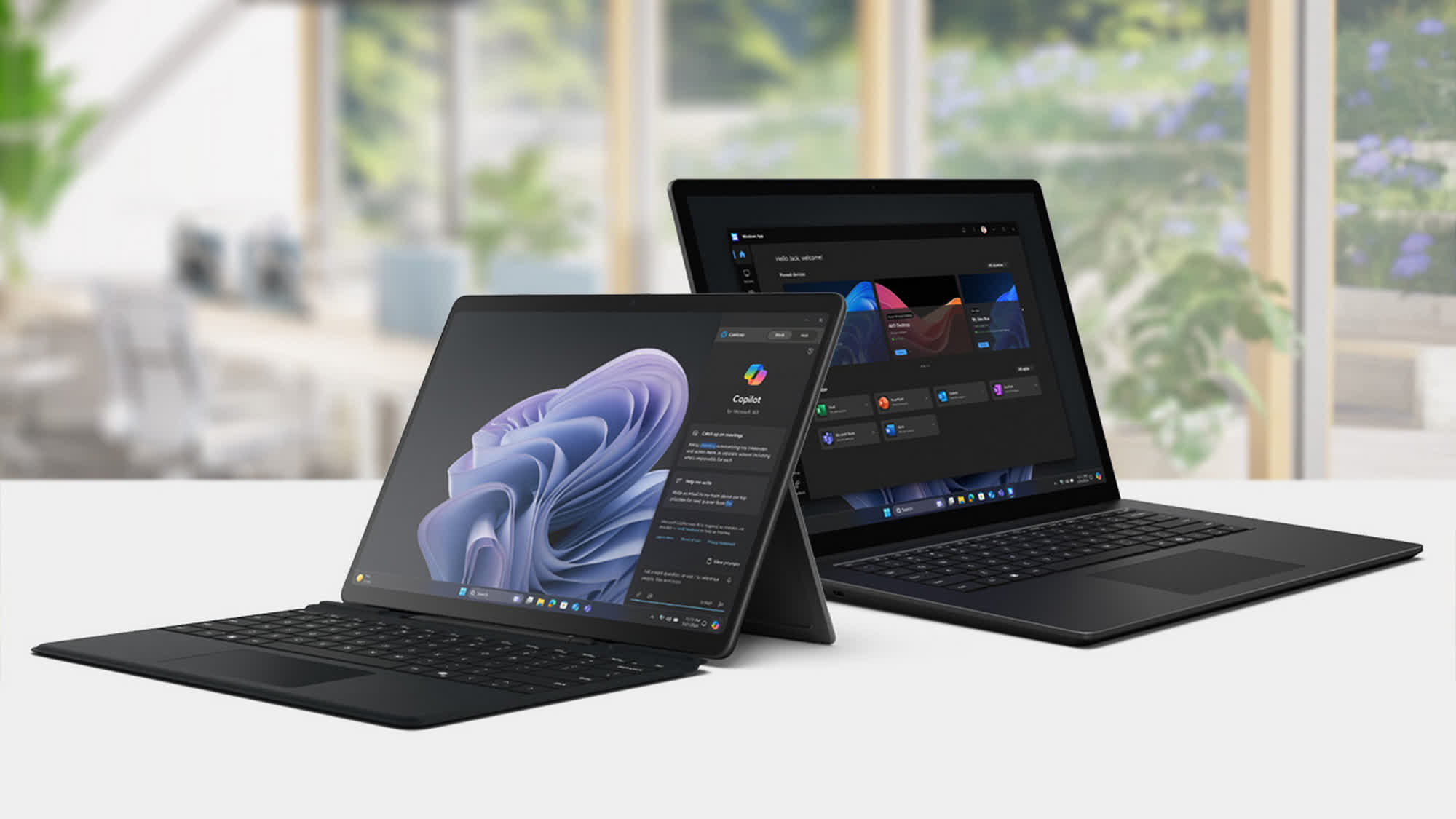Posts: 1,619 +47
Rumor mill: Microsoft is promoting their Surface devices powered by Snapdragon X processors as a paradigm shift in AI capabilities, efficiency, and battery life. After all, they used the device to inaugurate the company's Copilot+ branding. But now, following some impressive early results from Intel's Lunar Lake Core 200V processors, leaks suggest that Microsoft will continue updating its Intel and Qualcomm-powered Surface laptops in parallel.

A recently removed online store listing claimed that Microsoft is preparing a new Surface laptop featuring Intel's recently introduced Lunar Lake Core 200 architecture. Sources from Windows Central corroborated this information, claiming the notebook will be available sometime next year.
The device includes an eight-core Intel Core Ultra 268V processor with Arc 140V integrated graphics, 32GB of memory, and a 1TB SSD. According to the listing from Chinese retailer Goofish, Microsoft is expected to sell the laptop for around $2,500, though the seller offered it for approximately $1,500. The seller emphasized that the product is an upcoming Surface model and not the recently released variant based on Intel's Meteor Lake Core Ultra 100.

Other details, such as the display type and minimum price, remain unclear. However, the images from Goofish show no significant design changes from the latest Intel-based Surface devices. The Surface Pro 10 and Surface Laptop 7, which debuted earlier this year, feature Core Ultra 100 processors, NPUs, and up to 64GB of RAM, with MSRPs starting at $1,200.
While the Goofish seller and Windows Central sources referred to the leaked notebook as the Surface Laptop 7, it could potentially be the Surface Laptop 8. The device's availability is still uncertain, as the Pro 10 and Laptop 6 are currently exclusive to business customers. The most recent consumer-focused Intel Surface devices still use 12th and 13th-generation processors without NPUs, which are due for an update.

The Snapdragon X Elite laptops were positioned to offer Windows users the same kind of power efficiency that Apple Silicon brought to macOS, based on the assumption that Arm had conclusively surpassed x86 in this area. However, Lunar Lake has called this assumption into question.
In recent benchmarks, Intel's Core 200V has been seen surpassing Apple SoCs in battery life. Additionally, Intel's Xe2 Battlemage integrated graphics chip reportedly outperforms both Snapdragon X Elite and AMD's recently introduced Ryzen AI 300.
A Surface laptop featuring a high-end 200V chip could become one of the strongest offerings in its class. However, Apple with Apple expected to unveil a new MacBook Pro featuring its latest M4 processors before the end of the year, competition in the market may remain fierce.
New Microsoft Surface Laptop model leaks with Core Ultra 7 268V and 32GB of RAM